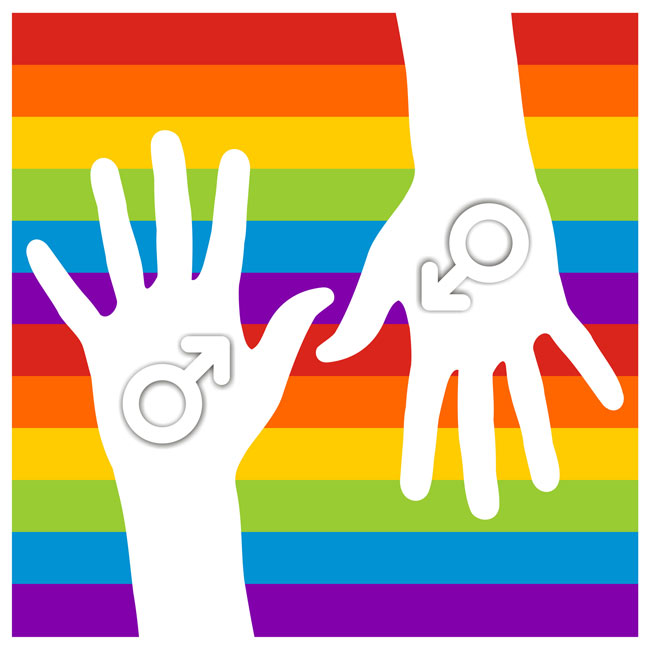High Suicide Risk, Prejudice Plague Transgender People

A staggering 41 percent of transgender people in the United States have attempted to commit suicide, according to a new survey. About 19 percent of transgender people report being refused medical care because of their gender-nonconforming status, and a shocking 2 percent have been violently assaulted in a doctor's office.
These statistics are just some of the sobering findings from a survey of more than 7,000 transgender people conducted by the National Center for Transgender Equality and the National Gay and Lesbian Task Force, released in October 2010.
Tomorrow (Nov. 20), the Transgender Day of Remembrance will pay tribute to people killed due to anti-transgender hatred or prejudice.
"It's an opportunity to honor the people who lost their lives for really no other reason than that another human being acted out of hatred or fear and were so consumed by that that they ended another person's life," said Justin Tanis, spokesperson for the National Center for Transgender Equality. "It's also an opportunity for us to look at what we can do about it. We've got to keep taking concrete steps to end that violence, because it's unacceptable that people continue to be killed and continue to be violently attacked."
Stacked deck
Psychologists say transgender people often face what feels like a stacked deck against them. The disapproval and confusion of friends, family and people around them creates a burden of stress. Many trans people fear for their safety because of the threat of anti-transgender violence.
Furthermore, many report having trouble finding and keeping jobs because of their transgender status.
Get the world’s most fascinating discoveries delivered straight to your inbox.
"If there isn't a clause like an anti-discrimination rule, people can be let go if they transition" from one gender to another, said clinical psychologist Gail Knudson, a professor in the department of sexual medicine at the University of British Columbia and medical director of the Transgender Health Program at Vancouver Coastal Health. "And it's difficult if you do not pass well [as your preferred gender] to find employment because people are discriminated against."
One of the biggest issues many trans people face is the difficulty of changing gender. Transitioning from one gender to another can take many forms, but often requires hormone therapy and sometimes surgery on breasts and/or genitals.
Many people have to pay out-of-pocket for these expenses, because they either don't have medical insurance or their insurance doesn't cover the treatment. Additionally, the process takes a long time — most doctors follow guidelines called the Standards of Care that require people to live and present as their preferred gender for months before receiving any physical intervention.
Yet transgender people overwhelmingly say it's worth it. After transitioning, transgender people show a significant decrease in substance abuse problems and depression, for example, and their mental health significantly improves, Knudson said.
Before transition, people struggle with gender dysphoria — the feeling that they are stuck in the wrong body that doesn't match the way they feel on the inside.
"For their lives to go forward they need to transition," Knudson told LiveScience. "A lot of the health care providers that work in the field see transitioning as a medical necessity — not as something people chose to do, but as something they need to do to lead productive lives."
Other risks
In addition to their higher risk of suicide, transgender people face steeper odds for other health issues.
For example, the recent survey found that 2.64 percent of trans people are infected with HIV — that's more than four times the national average rate of 0.6 percent in the general population. And 25 percent of the survey respondents reported misusing drugs or alcohol specifically to cope with the discrimination they face due to their gender identity.
A 2003 study by Ilan H. Meyer of Columbia University found that lesbian, gay and bisexual people have a higher prevalence of mental disorders than heterosexuals. The author explains this prevalence in terms of minority stress, writing in the journal Psychological Bulletin that "stigma, prejudice, and discrimination create a hostile and stressful social environment that causes mental health problems."
Though transgender people weren't included in the study, these same stressors apply, experts say.
"Some of the key components of the minority stress model state that stigma, prejudice and discrimination create a hostile and stressful social environment that are correlated with increased incidence of other mental health problems (e.g., depression, anxiety, and in extreme cases — suicidal ideations)," Seth Pardo, a doctoral candidate in the department of human development at Cornell University, wrote in an e-mail to LiveScience. "Indeed, several recent reports have surfaced in the national and perhaps more so in the local media of gender-nonconforming youth and young adults being harassed or otherwise bullied at school."
Galvanizing effect
While many experts knew the situation was tough, results from the recent survey — the first one conducted on a large nationally representative sample of transgender people — were still surprising.
"I knew that the magnitude would be high, but I did not think the suicide attempt numbers would be that high," Knudson said. That 41 percent suicide rate among transgender people is more than 25 times the rate of the general population, which is 1.6 percent. And among trans people ages 18-44, the suicide attempt rate was 45 percent.
While sobering, Knudson said the findings may be effective in making some changes.
"It is very galvanizing in a sense that in order for policy to change we need that raw data," she said.
Previously, many studies on transgender people were combined with investigations on gays, lesbians and bisexuals. While the recent rash of teen suicides, many sparked by homophobia, has called attention to the plight of gay youth, there is data to suggest that transgender people can sometimes face even more prevalent discrimination and harassment.
"Many trans youth may begin by thinking they are just gay or lesbian because there is a strong correlation between gender nonconforming behavior and same-sex attractions," Pardo wrote. "However, because of this, many trans youth that do have same-sex attractions face the added stigma of being overtly different (behaviorally/dress style, etc.), and potentially represent several additional domains where bullying may become more prevalent (e.g., not just for partner preferences, but for behavior, dress style, choice of activities, etc.)."
However, there are some signs of hope on the horizon.
In 2009, the Matthew Shepard and James Byrd Jr. Hate Crimes Prevention Act was passed by Congress and signed into law by President Obama. The bill expands the pre-existing U.S. hate-crimes law to include crimes motivated by a victim's actual or perceived gender, sexual orientation, gender identity or disability. It also provides funding for investigating and prosecuting hate crimes, and requires the FBI to track statistics on hate crimes against transgender people.
"That was the first law to extend protections to transgender people," Tanis said. "While results will be long-term, it still means we're moving in the right direction."
The Trevor project operates the nation's only 24-hour toll-free suicide prevention helpline for gay, lesbian, bisexual, transgender, and questioning youth (1-866-4-U-TREVOR).

